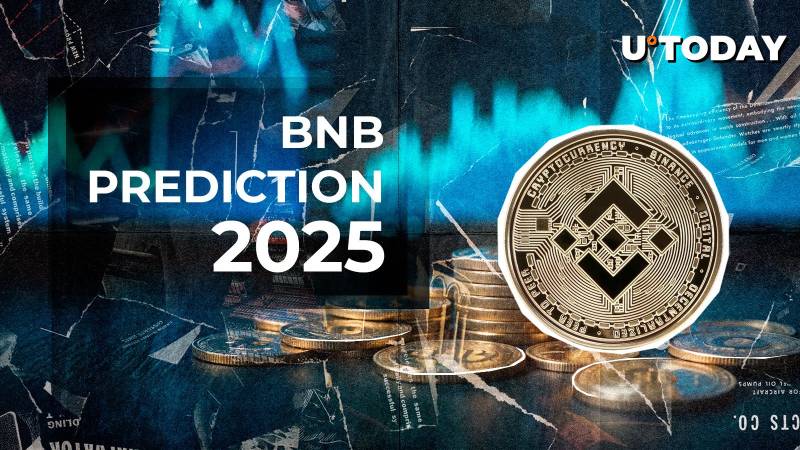 |
|
 |
|
 |
|
 |
|
 |
|
 |
|
 |
|
 |
|
 |
|
 |
|
 |
|
 |
|
 |
|
 |
|
 |
|
Cryptocurrency News Articles
Qubetics: The Web3 Aggregator Revolutionizing Blockchain Interoperability
Feb 23, 2025 at 10:15 pm
The blockchain space is evolving faster than ever, and two major players—Polkadot and Cosmos—are leading the charge in cross-chain interoperability.

The cryptocurrency market is brimming with new possibilities as we head into another week of digital asset exploration. While established players like Polkadot and Cosmos continue to shape the landscape of blockchain interoperability, a new force is emerging on the scene, promising to revolutionize the way we think about cross-chain connectivity. But what sets these projects apart, and which one is making waves as a top crypto to join this week? Let's dive in and find out.
Introducing Qubetics: The Web3 Aggregator Unifying Blockchains
In a world where blockchains often operate like isolated islands, a new project is stepping up to bridge the gaps and create a truly interoperable Web3 ecosystem. Enter Qubetics ($TICS), the world's first Web3 aggregator.
While Polkadot and Cosmos have made great strides in connecting blockchains, Qubetics goes a step further by uniting leading blockchains like Ethereum, Solana, and Binance Smart Chain into a single, interoperable framework. This means that businesses, developers, and users can interact across multiple chains effortlessly, without the need for complex integrations or additional development work.
Imagine a global e-commerce store that accepts crypto payments. If it only operates on Ethereum, it misses out on users from Solana, Binance Smart Chain, or Avalanche. But with Qubetics' Web3 aggregator, the store can accept payments from multiple blockchains, broadening its customer base and increasing revenue potential.
The same applies to DeFi projects and NFT marketplaces. Right now, launching a DeFi app on Ethereum locks it into one ecosystem. But with Qubetics, DeFi platforms can operate across multiple chains, reaching more users and increasing liquidity. NFT creators can also mint collections on different blockchains without worrying about compatibility issues.
This kind of interoperability isn't just an upgrade—it's a necessity. And with Qubetics leading the way, it's no surprise that crypto analysts are calling it one of the top cryptos to join this week.
Polkadot: Expanding Parachains and Driving Blockchain Innovation
Polkadot has taken blockchain interoperability to new heights with its parachain system. Unlike traditional blockchains that struggle to communicate, Polkadot allows independent blockchains to plug into its network, ensuring seamless data and asset transfers.
Recently, Polkadot has been expanding its parachain auctions, enabling more projects to integrate into its ecosystem. This move is attracting developers looking for scalable and interoperable blockchain solutions.
Another major advancement is Polkadot’s focus on decentralized governance. The network's on-chain voting system allows token holders to decide on upgrades and protocol changes, making Polkadot a truly community-driven ecosystem.
With its continued innovation in cross-chain connectivity, Polkadot remains a major player in the crypto world, helping drive the adoption of a more interconnected blockchain future.
Cosmos: The Pioneer of Inter-Blockchain Communication in the Crypto Scene
Cosmos has been a trailblazer in blockchain interoperability with its Inter-Blockchain Communication (IBC) protocol. This technology allows different blockchains to transfer data and assets without relying on centralized intermediaries.
Recent Cosmos upgrades have strengthened its security and efficiency, ensuring smoother cross-chain transactions. The ecosystem is expanding rapidly, with new projects building on the Cosmos SDK, making it a favorite among developers.
Cosmos is also making waves in decentralized finance (DeFi) by enabling seamless liquidity movement across chains. This gives DeFi protocols more flexibility and accessibility, making cross-chain trading easier than ever.
With its continued commitment to breaking blockchain barriers, Cosmos is proving why it's a crucial part of the interoperable blockchain revolution.
Conclusion: Which Crypto Is Making History This Week?
As we navigate the ever-evolving crypto landscape, the importance of blockchain interoperability becomes increasingly clear. While Polkadot and Cosmos have made significant contributions to this space, a new project is taking a broader approach to cross-chain connectivity.
Qubetics, with its unique Web3 aggregator, is uniting multiple chains and revolutionizing the way we interact with the blockchain world. With its presale nearing the next price increase and major price predictions ahead, Qubetics is the one to watch. For those looking to get in early and maximize their opportunities, now is the time to join the Qubetics presale.
FAQs
What makes Qubetics different from Polkadot and Cosmos?
Polkادت and Cosmos are known for their cross-chain capabilities, but Qubetics takes a different approach by acting as a Web3 aggregator. This allows for seamless cross-chain interactions across multiple leading blockchains, making it a standout in the crypto scene.
How often does the Qubetics presale price increase?
The Qubetics presale price increases by 10% every Sunday at 12 AM, making early investment the smartest move.
What are analysts predicting for $TICS?
Crypto analysts predict $TICS will hit $0.25 by the end of the presale, with
Disclaimer:info@kdj.com
The information provided is not trading advice. kdj.com does not assume any responsibility for any investments made based on the information provided in this article. Cryptocurrencies are highly volatile and it is highly recommended that you invest with caution after thorough research!
If you believe that the content used on this website infringes your copyright, please contact us immediately (info@kdj.com) and we will delete it promptly.
-

-

-

-

-

- Bybit Freezes $42.89M in Illicit Funds with Industry Partners, Halting Crypto Fraud. Swift Action Also Blocks $26M Meme Token Laundering Scheme.
- Feb 24, 2025 at 05:00 am
- Bybit successfully froze $42.89 million in illicit funds within just one day. The collaboration between Tether and THORChain as well as ChangeNOW and FixedFloat with Avalanche Ecosystem and CoinEx and Bitget and Circle resulted in this accomplishment.
-

-

-

-


























































